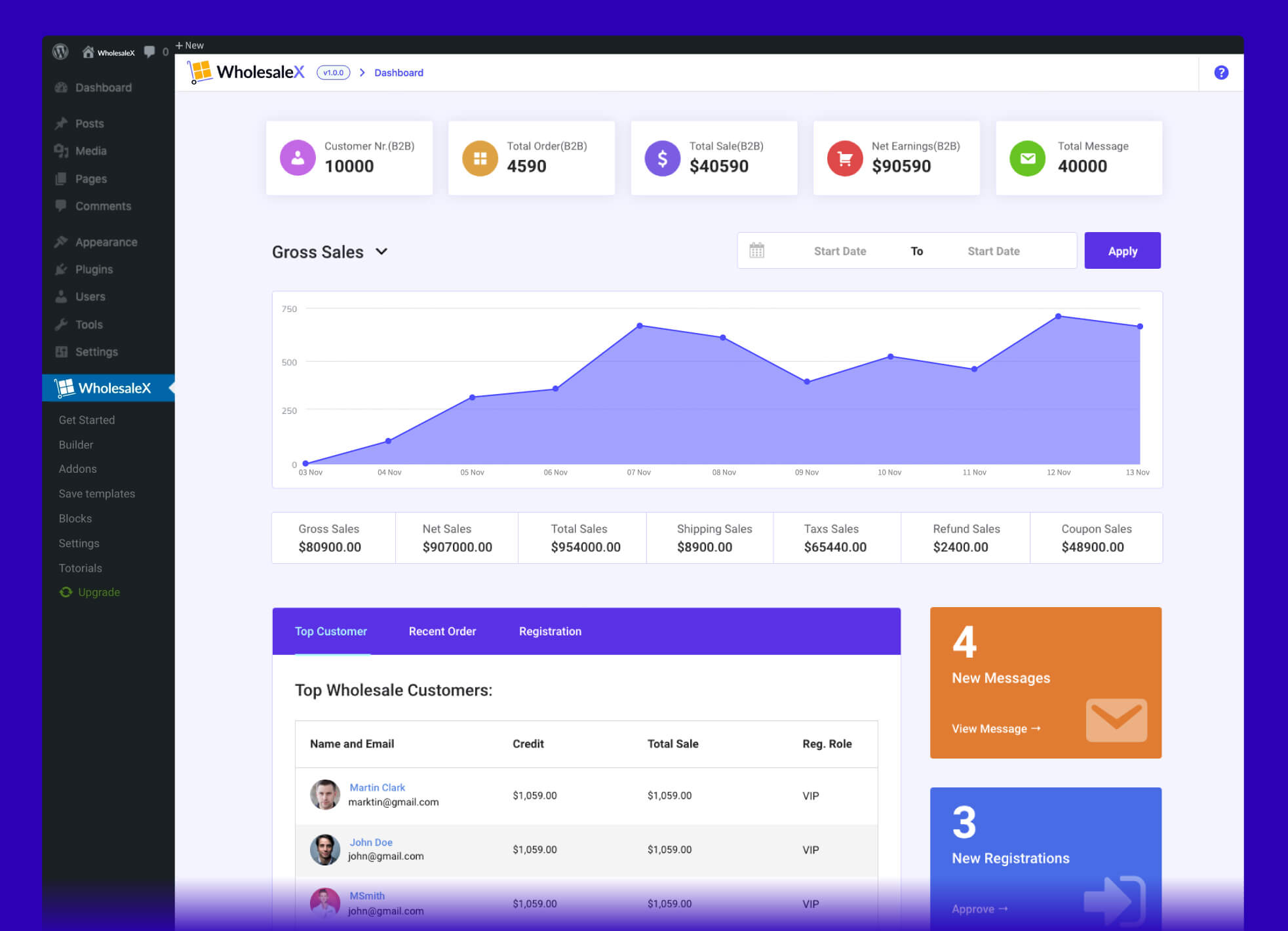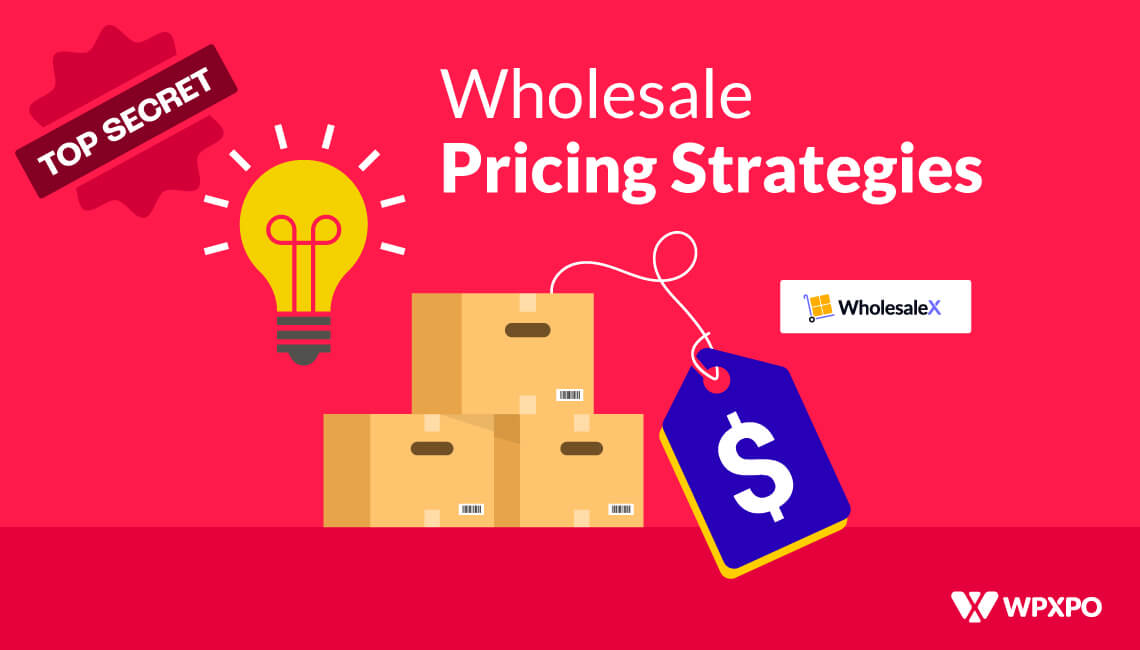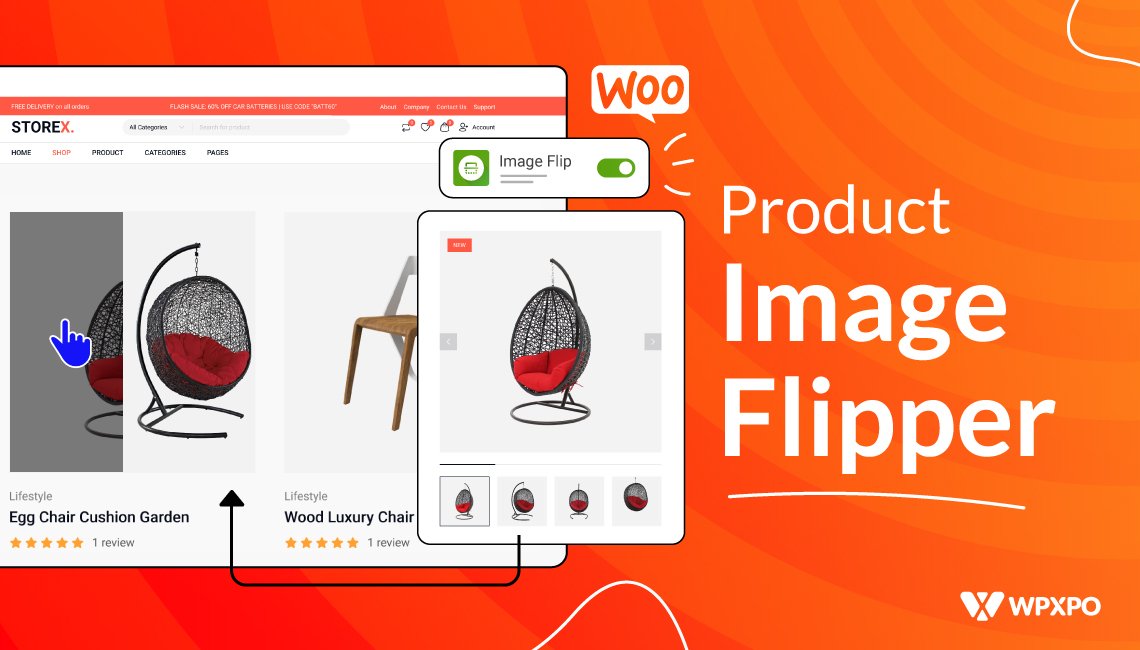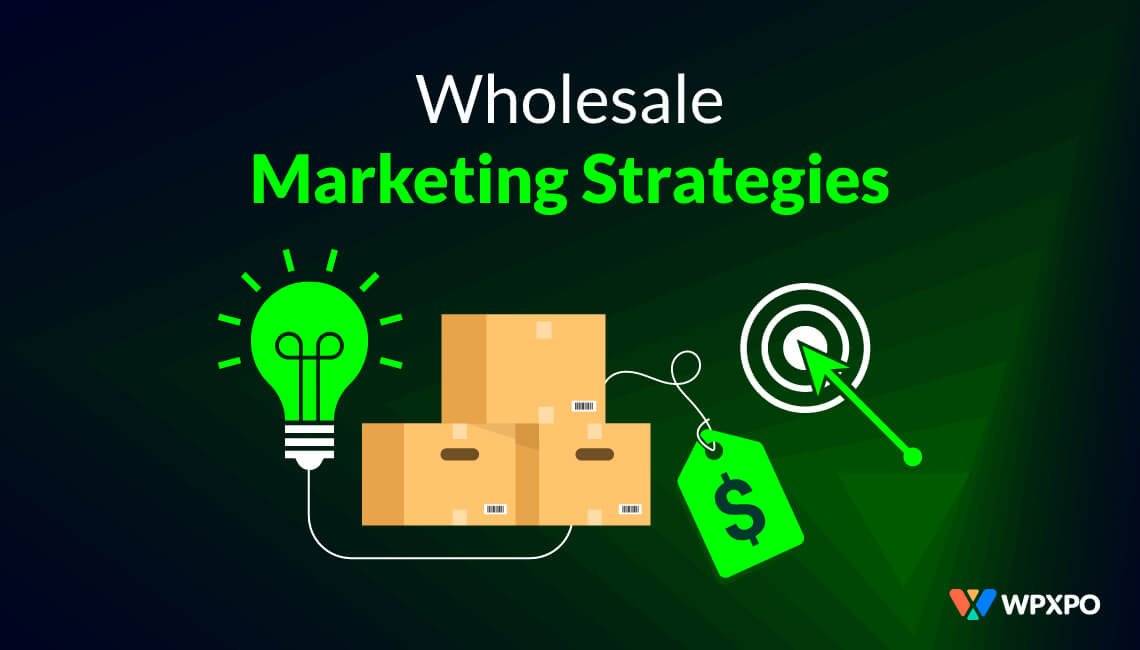Want to be the best in the market? Need pricing strategies to drive sales like water? Looking for the optimum solution?
Let’s not waste time and spill all the secrets we have learned over the years. These secret strategies can boost your business with maximum speed.
Today, we will tell you all those wholesale pricing strategies so that you won’t need anything else. Don’t let things get out of hand like Doctor Strange, and use these strategies to perfect your sales plans because:
"The moment you make a mistake in pricing, you're eating into your reputation or your profits." - Katharine Paine.
What are Wholesale Pricing Strategies?
Wholesale pricing strategies refer to wholesalers’ and distributors’ pricing structures and tactics to maximize profits and minimize costs. These strategies typically focus on setting competitive prices, managing discounts, and creating targeted promotions. Wholesale pricing strategies are often used to gain a competitive edge over competitors and increase market share. WooCommerce wholesale is rising with WholesaleX, and we have figured out how your business can rise with secret strategies. So go ahead and use WholesaleX as it is the easiest WooCommerce B2B Solution for all across the globe, no matter you live in the US or anywhere else and implement these strategies to get ahead of the wholesale game. Here’s the dashboard preview of WholesaleX:

Wholesale Pricing Strategies: Secrets Revealed
So here we are, ready to share all the secret wholesale pricing strategies. Are you curious to know them all?
The following strategies are your last resort if you want to grow your business. We bet you want that, so let’s not waste any more time and discover them.
1. Cost-Plus Pricing
Cost-plus Pricing is a pricing strategy used by wholesalers and retailers to determine the sale price of a product. The strategy involves adding a set markup percentage to the cost of the product to determine the final selling price.
This markup percentage is usually determined by the retailer or wholesaler, depending on their desired profit margins. The advantage of this pricing strategy is that it is relatively simple to calculate and helps ensure that the product generates a profit.
It is commonly used by retailers and wholesalers when selling products at a fixed price. This allows them to quickly set a selling price for new products without spending time researching the market and analyzing the competition.
The disadvantage of this pricing strategy is that it needs to account for competitive market environments or changes in consumer demand. Wholesalers and retailers must stay aware of market trends and adjust their pricing accordingly to stay competitive.
2. Keystone Pricing
Keystone Pricing is a pricing strategy used by business owners and retailers to increase their profits. This type of pricing involves setting the price of a product at a certain percentage above the cost of the item. This percentage, also referred to as a “keystone,” is typically double the cost of the product.
Retailers often use this type of pricing to ensure that their profits are maximized, as the price is set high enough to cover all costs and generate a profit for the business.
The keystone pricing strategy is beneficial for both the retailer and the customer. For retailers, it ensures that they make a profit. At the same time, it allows customers to purchase items at a discounted rate. This pricing can also encourage customers to purchase in bulk, as they can purchase items at a discounted rate when they buy in higher quantities.
Overall, Keystone Pricing is a beneficial pricing strategy that retailers can use to maximize their profits and for customers to save money. Understanding the differences between keystone pricing and other pricing strategies is important to ensure that you use your business’s most effective pricing strategy.
3. Bundle Pricing
Bundle pricing is used by businesses to offer customers discounts when they purchase multiple items or services at once.
This pricing can benefit customers who need to purchase multiple items or services, as it encourages them to make larger purchases, resulting in greater savings. It can also benefit businesses by encouraging customers to purchase more items or services, resulting in higher sales volume and increased profits.
For example, a clothing store may offer a discount on a purchase of three items or more, or a restaurant may offer a discount when a customer orders two or more meals. In both cases, the customer will receive a discount in exchange for buying multiple items or services. This type of pricing is also beneficial for businesses, as it encourages customers to purchase in larger quantities, which can help to increase revenue and profits.
Bundle pricing can be used for various products and services. It can be tailored to individual businesses to meet their specific needs. It is important to consider the customer’s needs and preferences when creating a bundle pricing strategy and to ensure that the discounts offered are attractive enough to encourage customers to make larger purchases.
4. Penetration Pricing
Penetration pricing is a pricing strategy businesses use to gain a foothold in the market by lowering prices to gain a larger customer base. This strategy is often used to compete with established companies with higher prices, allowing the business to attract more customers and gain market share.
The idea behind penetration pricing is to offer a lower price than the competition, often by reducing margins or offering discounts, to entice customers away from the competition. This strategy is often used to test the market and gain customer feedback, allowing the business to make changes to its product or pricing strategy more quickly.
Penetration pricing can be a successful strategy, but it is also important to consider the long-term implications. Lower prices can lead to increased sales in the short term.
However, they can also lead to lower customer loyalty and an inability to raise prices later if the market conditions change. It is also important to ensure that the prices are low enough to attract customers but not so low that the business loses.
5. Loss Leader Pricing
Loss leader pricing is a strategy retailers use to set prices extremely low on certain items to attract customers and increase overall sales. This pricing strategy is often used for items with high demand or is popular with consumers.
The idea behind this type of pricing is that the retailer will make up the difference in cost through increased sales of other items in the store. The strategy is used among online and brick-and-mortar stores to attract more customers.
The benefits of this pricing strategy are that it can help increase sales and profits of other items in the store while also helping to draw in more customers. It can also be used to promote newer products or services and eliminate excess inventory. Retailers often use this strategy to differentiate themselves from their competitors and to create a sense of urgency among customers.
The downside to this type of pricing strategy is that it can take time to maintain profitability in the long run. It is also important to consider the overall customer experience, as customers may become frustrated with products priced too low.
Additionally, this strategy can lead to price wars among retailers as they try to undercut each other to attract customers.
6. High/Low Pricing
High/Low Pricing is a type of pricing strategy used by retailers and wholesalers to attract customers and increase sales. This strategy involves setting different prices for the same item depending on the quantity purchased.
For example, a retailer may offer a higher price for purchasing a single item, while a lower price is for buying multiple items in bulk. This strategy is sometimes used to encourage customers to purchase larger product quantities. It can be beneficial for both the retailer and the customer.
The main benefit of the High/Low Pricing strategy is that it can help retailers increase their margins. By offering larger discounts for bulk purchases, retailers can increase their profits. At the same time, customers can benefit from lower prices when buying in bulk, allowing them to save money.
Additionally, this pricing strategy can help retailers increase their market share, as customers may be more willing to purchase from an outlet offering lower prices on bulk orders.
High/Low Pricing can also help retailers improve their customer service. By offering lower prices for bulk orders, retailers can create a more attractive shopping experience for their customers. This can help increase customer loyalty and repeat business, as customers may be more likely to return to an outlet offering discounted bulk prices.
7. Volume Pricing
Volume Pricing is a pricing strategy businesses use to incentivize customers who purchase large quantities of goods. This type of pricing allows businesses to offer steep discounts for bulk purchases, which encourages customers to buy more and increases the overall sales volume. It can attract new customers, reward loyal customers, and increase profitability.
Volume Pricing is based on the principle that the more a customer buys, the lower the price per item should be. This is done by setting different prices for different quantities of goods.
For example, a business may offer a lower price for purchases of 10 items or more or a larger discount for purchases of 100 or more. The discounts can be fixed or may vary depending on the order size.
The benefits of Volume Pricing include the ability to attract new customers, reward loyal customers, and increase sales and profits. However, it is important to remember that it can also lead to decreased margins if discounts are too large.
Additionally, balancing the need to make large discounts with maintaining profit margins can take time and effort. Therefore, it is important to carefully consider the discount’s cost structure and size to ensure that the pricing strategy is profitable.
8. Seasonal Pricing
Seasonal pricing is the practice of lowering prices during certain times of the year to increase sales. This pricing strategy typically occurs during peak sales, such as the holiday season, when retailers want to increase their revenues. It can also reduce inventory to make room for new products.
Seasonal pricing is often used to target a specific customer base. For instance, retailers may offer discounts to customers shopping for Christmas gifts or back-to-school supplies. In addition, retailers may also offer discounts to specific customer groups, such as students or seniors.
Seasonal pricing can be a great way to increase sales, especially when used strategically. However, it is important to remember that it is not the only way to increase sales. Retailers should also focus on providing excellent customer service and creating an attractive shopping experience.
Additionally, retailers should consider other promotional strategies, such as loyalty programs, to keep customers returning.
Overall, seasonal pricing can be an effective way to increase sales. However, it should be used with other strategies to maximize effectiveness.
9. Competitive Pricing
Competitive pricing, also known as pricing optimization, is a strategic pricing technique used by wholesalers to maximize profit margins, reduce costs, and maintain a competitive edge in the market. It involves analyzing market prices, competitor pricing strategies, and customer feedback to determine the most effective pricing points for a particular product. This process helps wholesalers optimize prices to maximize profits without sacrificing customer satisfaction.
It is a complex process that requires an in-depth understanding of the market and customer preferences. Wholesalers must consider various factors when setting prices, such as the cost of production, customer demand, and the overall competitive landscape.
They must also assess the impact of their pricing on their competitors and the impact of their competitors’ pricing on them.
Competitive pricing is an important strategy that helps remain competitive and maximize their profits in a competitive market. Wholesalers can set competitive yet profitable prices by analyzing market prices and customer feedback.
10. Dynamic Pricing
Dynamic pricing is a pricing strategy that allows wholesalers to adjust their prices in real-time based on demand, supply, and other market factors. This pricing is beneficial for both wholesalers and retailers, as it allows for greater flexibility in setting prices and for better profit margins.
It is based on several different factors, such as supply and demand, market conditions, customer demand, and competitor pricing. This allows wholesalers to adjust prices to match the market’s changing needs.
This type of pricing also allows them to adjust their prices to take advantage of short-term market spikes or drops, allowing them to increase their profit margins.
This pricing also allows for better customer service, allowing wholesalers to make quicker price adjustments. This means that customers can get the best possible prices without waiting for long-term price changes. In addition, dynamic pricing allows them to respond to customer feedback and adjust their prices accordingly.
Overall, dynamic pricing is a great way to increase profits while providing customers with the best prices possible. By taking advantage of dynamic pricing, wholesalers can increase their profit margins without sacrificing customer service.
11. Geographical Pricing
Geographical pricing is a pricing strategy in which a business charges different prices for its products or services in different geographic areas. This type of pricing is typically used to account for different demand levels, the cost of doing business, and competitive conditions in different geographic regions.
For example, a business might charge lower prices in areas with lower demand or higher competition or higher prices in areas with higher demand or less competition.
It can benefit businesses by allowing them to maximize revenue by charging different prices for the same product or service in different geographical regions. It can also provide incentives for customers to purchase from businesses in their region, as they may be able to obtain lower prices.
Also, it can help businesses better manage their costs by charging higher prices in areas with higher costs.
Geographical pricing can be complicated and challenging for businesses, as they must accurately assess the cost of doing business, competitive conditions, and demand levels in each geographic region to set accurate prices.
Additionally, businesses must be careful to avoid any potential legal or ethical issues related to price discrimination. Monitoring and enforcing pricing in different geographic regions can also be difficult.
12. Psychological Pricing
Psychological pricing is a strategy business owners use to influence their customers’ behavior and encourage them to purchase a product. This type of pricing involves setting prices at certain levels to manipulate customers into thinking they are getting a good deal or that the product is worth the price.
The most common psychological pricing techniques are setting prices at just below even numbers (e.g., $19.99 instead of $20.00), offering discounts off of full prices, and offering bundles or packages of items at discounted prices.
This type of pricing is popular in the wholesale and retail industries as it can increase sales and boost profits. This type of pricing is also beneficial for businesses as it can create a perception of value among customers.
By setting prices below even numbers, customers may feel like they are getting a better deal than if the prices were rounded up to the nearest dollar. Offering discounts off of the full price of items can also give customers the impression that they are getting a real bargain.
Overall, psychological pricing is an effective strategy that can be used to attract customers and increase sales. By manipulating prices and offering discounts, businesses can create a perception of value among their customers and encourage them to make purchases. This can be a great way for businesses to boost their profits and remain competitive.
13. Promotional Pricing
Promotional pricing is a strategy used by retailers to drive customer traffic and boost sales. By offering a special discounted rate for a limited time, retailers can encourage customers to purchase more products or services, increasing revenue and profits.
With promotional pricing, retailers can offer discounts on various products or services, including bulk purchases, promotional items, and seasonal and holiday items.
This pricing can be used to attract new customers and reward loyal customers. Offering discounts on bulk purchases can encourage customers to purchase multiple items at once, leading to increased sales. Promotional items, such as free gifts or complimentary products, can help draw customers in, while seasonal or holiday items can be discounted to drive sales during those times.
Retailers can customize their promotional pricing strategy to meet their specific needs and goals. They can offer discounts on certain products or services, select specific times for the promotion, and require customers to meet certain requirements to be eligible for the discount. Wholesale promotional pricing can be a powerful marketing tool, as it encourages people to purchase more and helps to increase customer satisfaction.
14. Odd-Even Pricing
Odd-Even Pricing is a strategy used by retailers in which the price of an item is set to an odd number or an even number. This pricing strategy intends to create a perception of value for the customer, as odd numbers can be perceived as more attractive than even numbers. This pricing can also encourage customers to purchase in bulk, as the price of multiple items will be reduced.
It can greatly increase sales, as customers may perceive the price as more attractive. It can also help retailers to create a perception of value, as the odd numbers may be seen as more attractive than the even numbers.
Additionally, this pricing can encourage customers to purchase in bulk, as the price of multiple items will be reduced. Retailers should be aware that using this pricing strategy may sacrifice some of their profit margins.
Overall, Odd-Even Pricing can greatly increase sales, create a perception of value, and encourage customers to purchase in bulk. However, it should be used cautiously, as it may reduce profit margins.
15. Price Skimming
Price skimming is a pricing strategy companies use to increase their profits by introducing a new product at a higher price than comparable products. The company sets a high initial price to generate maximum revenue in the short run. The company then reduces the product price over time as competition increases and demand decreases.
This pricing strategy is typically used when introducing a new product or service. The company hopes to generate maximum revenue in the short term before competitors enter the market and offer a similar product or service at a lower price. The company expects to make up the difference in the longer term as they increase its market share and increase their customer base.
However, price skimming can be risky as it relies on the company’s unique product or service that consumers will be willing to pay a premium for. Suppose competitors enter the market too quickly or with a similar product or service. In that case, the company’s higher price may put them at a disadvantage.
Additionally, suppose the company does not lower prices in a timely manner. In that case, it may miss out on potential customers looking for a lower price.
16. Premium Pricing
Premium Pricing is a strategy businesses use to maximize profits from large orders from wholesalers or bulk buyers. This pricing strategy involves charging a higher price per unit for larger orders while offering discounts on smaller orders.
This pricing strategy aims to incentivize wholesalers to purchase larger product quantities, which can help increase revenue and profits. This strategy also helps to protect smaller businesses from being undercut by larger competitors.
When setting a premium pricing strategy, businesses should consider their target customers and the cost of production. For example, if production costs are high, businesses may need to charge a higher price to make a profit.
Additionally, businesses should consider the competitive landscape and how their pricing strategy compares to their competitors. It is important to remain competitive, as this can help to attract more customers and increase sales.
Overall, premium pricing is an effective strategy for businesses to maximize profits from large orders. This pricing strategy can help businesses attract larger buyers, increase revenue and protect themselves from being undercut by larger competitors.
17. Free Pricing
Free pricing is a pricing strategy that involves selling products to customers at a price lower than the suggested retail pricing. Wholesalers typically use this pricing model to increase their sales volume and market share. With free pricing, they can offer lower prices to their customers while still making a profit.
This type of pricing is advantageous in that it allows retailers to compete with larger retailers, who may be able to offer lower prices. It also allows them to attract more customers and increase their customer loyalty.
The key to successfully implementing this strategy is to determine the cost of goods accurately and then set the prices accordingly. It is also important to consider the impact of the prices on the sellers reputation.
When setting prices, it is important to set them in line with the market price and to ensure that the prices are consistent with the overall pricing strategy. Additionally, wholesalers should be aware of the competition and how their prices compare to the competition.
Although this is an effective pricing strategy, it can also be risky. If the prices are higher, the wholesaler may profit, and the customer may not be satisfied with the product.
Additionally, it is important to consider the implications of offering discounts. If the discounts are too generous, customers may become reliant on the discounts and may not be willing to pay the full price. Therefore, it is important to ensure that discounts are reasonable and that customers understand that discounts may only sometimes be available.
Overall, free pricing can be an effective tool for wholesalers to increase their sales volume and market share. However, it is important to consider all the implications of offering discounted pricing and ensure that the prices align with the market price. Additionally, they should be aware of the competition and how their prices compare to the competition.
18. Negotiated Pricing
Negotiated pricing is a pricing strategy where buyers and sellers negotiate a price outside the standard market rate. This pricing is often used when a buyer is looking to purchase goods in bulk, allowing them to secure a discounted rate from the seller.
This can help both the buyer and seller in ensuring a fair deal. For the buyer, it allows them to get a lower price than what is typically offered on the market, giving them a competitive edge and helping them to save money. For the seller, it allows them to make a more profitable sale than they could have made by selling the goods at their standard price.
This strategy can be used in various industries, from retail to manufacturing. For example, a buyer can negotiate a lower price with a wholesaler when buying in bulk, or a manufacturer may negotiate a higher price with a retailer when selling in bulk. In addition, negotiated pricing can be used to secure discounts on shipping and other costs associated with the sale.
Negotiated pricing can be a beneficial strategy for both buyers and sellers, as it allows for a more personalized deal that works for both parties. However, buyers should be aware that negotiated pricing can be time-consuming and may require additional resources and effort. Negotiations should only be entered when buyers clearly understand the market and the terms they are willing to accept.
19. Tiered Pricing
Tiered pricing is a pricing strategy used by wholesalers to incentivize the purchase of larger quantities of products. This approach offers customers discounts for ordering in bulk, making it a cost-effective way for retailers to buy in larger quantities. Generally, the prices for each tier increase incrementally as the quantity increases, providing a greater incentive for customers to buy more.
Tiered pricing is beneficial for both the wholesaler and the customer. It allows the wholesaler to profit by selling items in bulk and encourages customers to purchase more to receive discounted rates. It also benefits customers by allowing them to buy larger quantities to save money.
Tiered pricing is a great way to incentivize customers to purchase larger quantities. It can be a great tool for wholesalers to increase their profits. It is important to consider the cost structure of the products sold to accurately price each tier and ensure that customers receive a good deal. Additionally, it is important to consider the customer’s needs when setting prices to ensure that the discounted rates benefit them.
20. Auction Pricing
Auction pricing is a pricing strategy in which buyers and sellers interact in an auction-style setting to determine the price of a product. This pricing strategy is commonly used in wholesale, where products are sold in bulk to businesses or other buyers.
The auction process typically begins with a seller offering several products for sale and setting the starting price or reserve price. Buyers then place bids to outbid each other, and the highest bidder wins the product. The winner pays the final bid price, which is typically lower than the starting price.
Auction pricing is attractive to buyers because it allows them to purchase goods at a discounted price in bulk. This can be especially beneficial for businesses that need to purchase large quantities of items. Sellers also benefit from auction pricing since it can give them a higher return than other pricing strategies.
Overall, auction pricing is a popular pricing strategy in the wholesale marketplace. It allows buyers to purchase goods at discounted prices while allowing sellers to maximize their return.
21. Early Payment Discounts
Early payment discounts are a popular strategy wholesalers use to incentivize customers to pay their invoices early. This discount is typically offered as a percentage of the total invoice if the customer pays by a certain date or within a specific period.
By providing this incentive, wholesalers can encourage customers to pay their invoices quickly, thereby increasing their cash flow and reducing the costs associated with the collection, such as late fees and collection costs. Additionally, offering an early payment discount can strengthen customer relationships by showing that the wholesaler values their customer’s business.
When considering an early payment discount strategy, weighing the potential benefits against the potential costs and risks is important. The primary benefit of offering this type of discount is improved cash flow, as customers are more likely to pay their invoices quickly.
However, there is a risk that customers may take advantage of the discount by waiting until the last minute to pay or by attempting to renegotiate payment terms. Additionally, offering a discount could reduce profits, as wholesalers may need help to recoup the costs associated with the collection and late fees.
For these reasons, it’s important to carefully consider the potential benefits and risks associated with offering an early payment discount before implementing it. The strategy should only be used if the expected benefits outweigh the potential risks and costs.
Additionally, it’s important to ensure that the discount is applied consistently and that customers know the terms and conditions associated with the offer.
22. Segmented Pricing
Segmented pricing also known as role-based discounts is a pricing strategy that allows businesses to offer different prices to different segments of customers. This strategy allows businesses to maximize their profits by targeting different customer segments with different prices.
For example, a business might offer a lower price to wholesalers, a higher price to retailers, and a middle price to online customers. This strategy increases profits by charging different prices to customer segments.
Businesses often use this in the apparel, electronics, and food industries. This strategy allows businesses to take advantage of different customer segments’ purchasing power.
For example, a business might offer higher prices to wholesalers who buy in bulk, lower prices to retailers who buy in small quantities, and middle prices to online customers. This allows businesses to maximize their profits from each segment of customers.
Segmented pricing can also encourage customers to purchase in larger quantities. For example, a business might discount customers who purchase a certain quantity. This encourages customers to purchase larger quantities, resulting in higher profits for the business. Also, you can allow a role-based shipping method with segmented pricing.
Overall, segmented pricing is a pricing strategy that allows businesses to maximize their profits by targeting different customer segments with different prices. This strategy allows businesses to take advantage of different customer segments’ purchasing power and encourages customers to purchase in larger quantities.
23. Price Lining
Price Lining is a pricing strategy in which a business sets a fixed price for all its products or services. This strategy is often used by wholesalers, who sell many items and don’t need to vary prices based on individual customer demand.
The advantage of this strategy is that it allows the business to provide consistent, predictable, and easy-to-understand prices. Additionally, the fixed price makes it easier for the business to control inventory costs since they can effectively manage the number of items they have in stock.
The downside to this strategy is that it can limit the business’ ability to compete in the marketplace, as customers may be able to find better prices from other businesses. Additionally, customers may perceive the fixed price as unfair or inflexible if it does not match their needs. This can lead to customer dissatisfaction and, in extreme cases, a loss of business.
Price Lining is a viable pricing strategy for businesses that sell a large number of items and don’t need to adjust prices based on individual customer demand. However, it is important to consider the potential drawbacks of the strategy before implementing it.
24. Free Trials
Free trials are an important strategy for businesses selling bulk products. By offering a free trial period, businesses can allow potential customers to test the product before committing to buying it in bulk. This can build trust in the product and increase sales.
A successful free trial strategy should be tailored to the customer’s needs. For example, providing discounts on bulk orders, offering flexible payment options, allowing customers to sample a few items before committing to a larger purchase, or offering free shipping can be effective strategies for encouraging customers to try the product. Additionally, businesses should clearly communicate the terms and conditions of their free trial period.
A free trial’s success depends on how well the customer understands and values the product. Therefore, businesses should provide ample information about the product, its features, and any benefits associated with the purchase.
Additionally, businesses should consider offering incentives such as discounts or free shipping to encourage customers to take advantage of the free trial period.
Overall, a free trial strategy can be a great way to introduce potential customers to a product and increase sales. By offering a free trial period, businesses can allow customers to test the product before committing to a larger
25. Referral Pricing
Referral Pricing is a strategy companies use to reward customers who refer new customers. It involves offering discounts to customers who refer new customers to the company. This strategy is used to increase word-of-mouth marketing and build brand loyalty. By offering discounts to customers who refer new customers, the company can increase its customer base and grow its sales.
This strategy works because customers who refer new customers to the company will receive a discount on their next purchase. This discount can be applied to the entire purchase or just a selected item. Customers who refer multiple customers will receive larger discounts. This encourages customers to spread the word about the company and rewards them.
Referral Pricing is a great way to increase customer loyalty and increase sales. It also helps build relationships with customers and encourages them to think of the company when they have friends or family interested in purchasing from it.
Conclusion
In conclusion, if you want to increase your sales, you need to learn and implement the right strategies. Whether you use tiered pricing, dynamic pricing, or any other strategy, you must understand your market, customers, and product.
And that’s why we have shared 25 secret wholesale pricing strategies to help you choose the best one for your business.
Doing so can ensure that your pricing strategy works for you and your business. With the right pricing strategies in place, you’ll be able to increase your sales and maximize your profits.
All these strategies can be quite daunting to implement in WooCommerce. But with WholesaleX WooCommerce B2B solution, you can use post of these secret wholesale pricing strategies and generate revenues like never before.

You can check out WordPress video tutorials on our YouTube Channel. Also, find us on Facebook and Twitter for regular updates!







